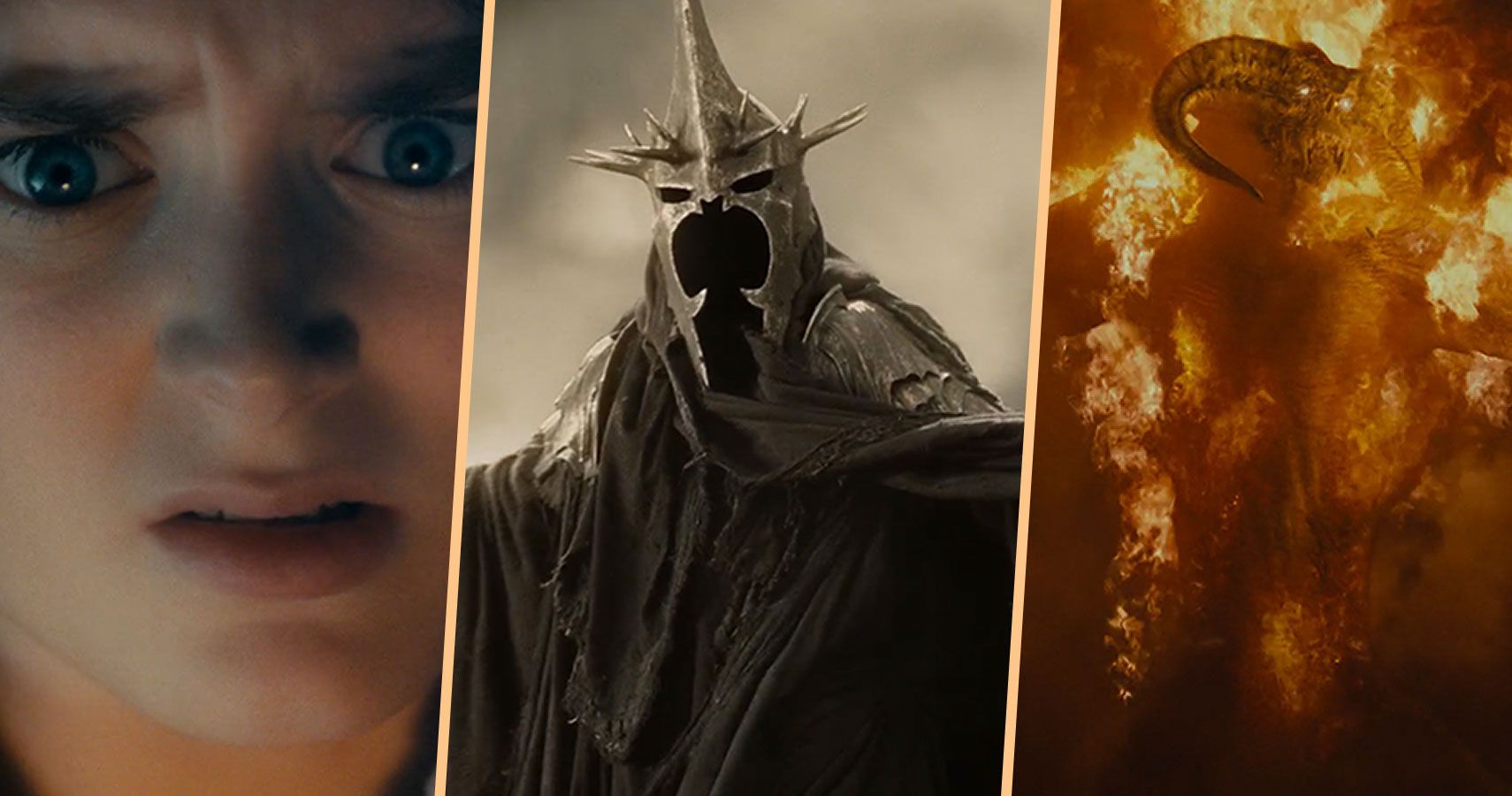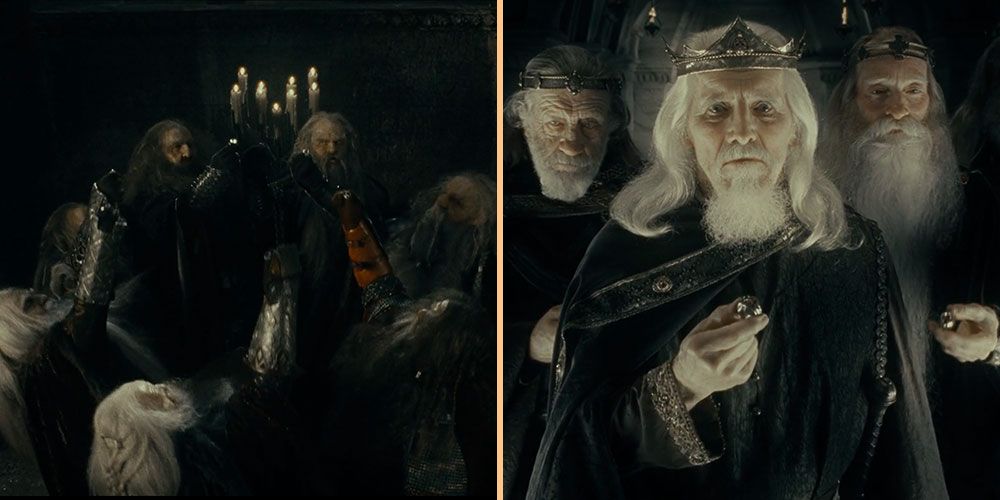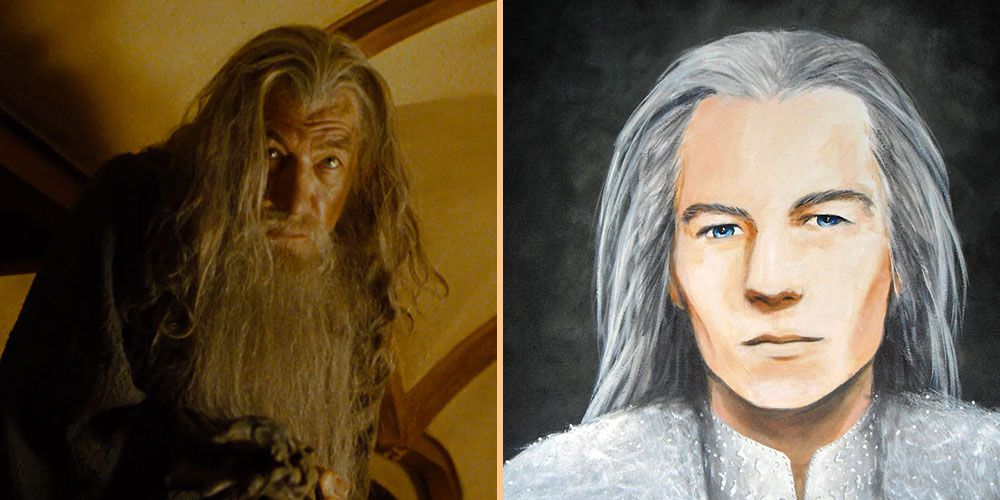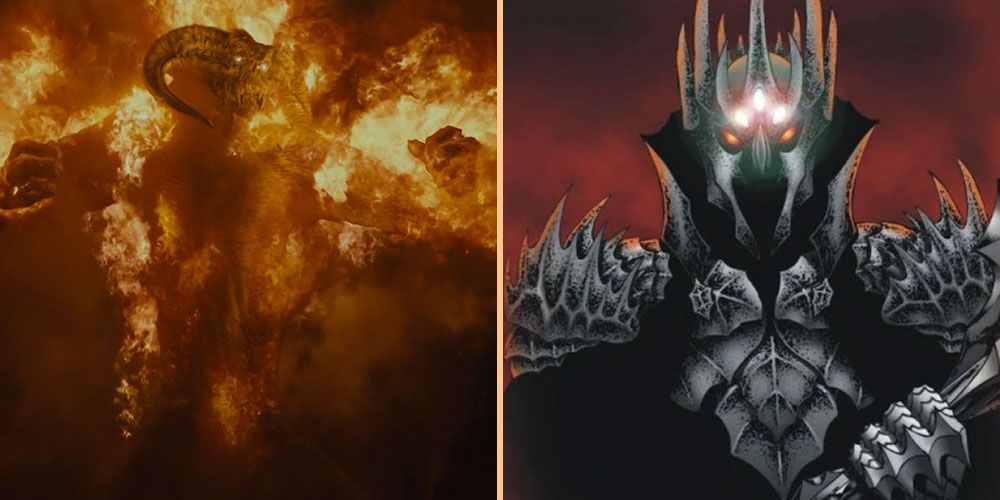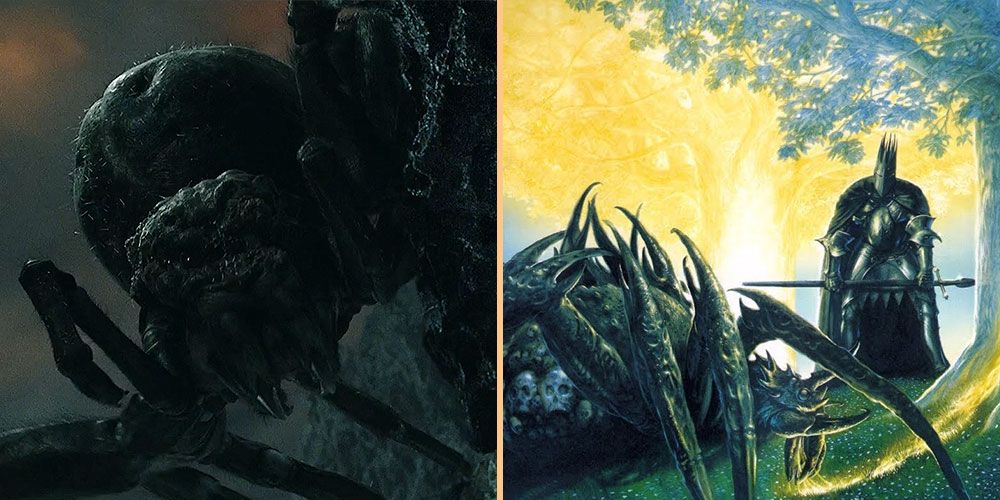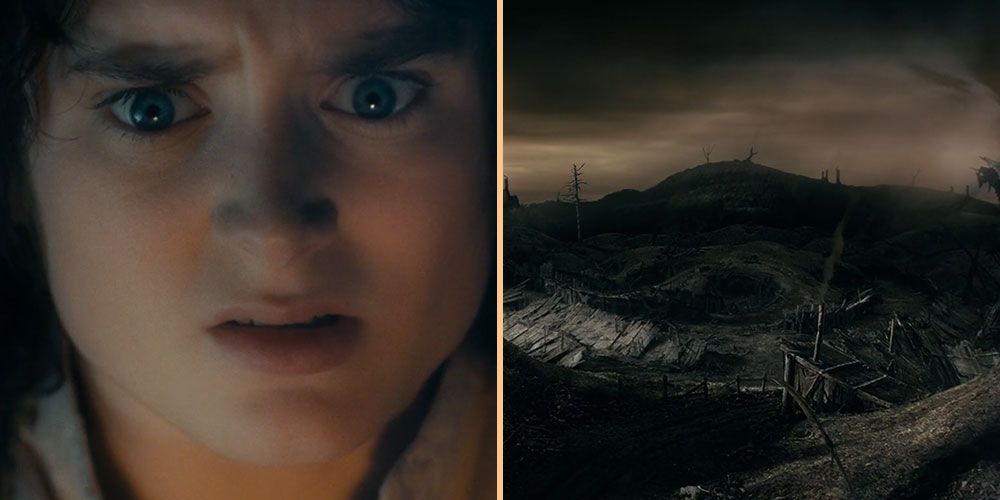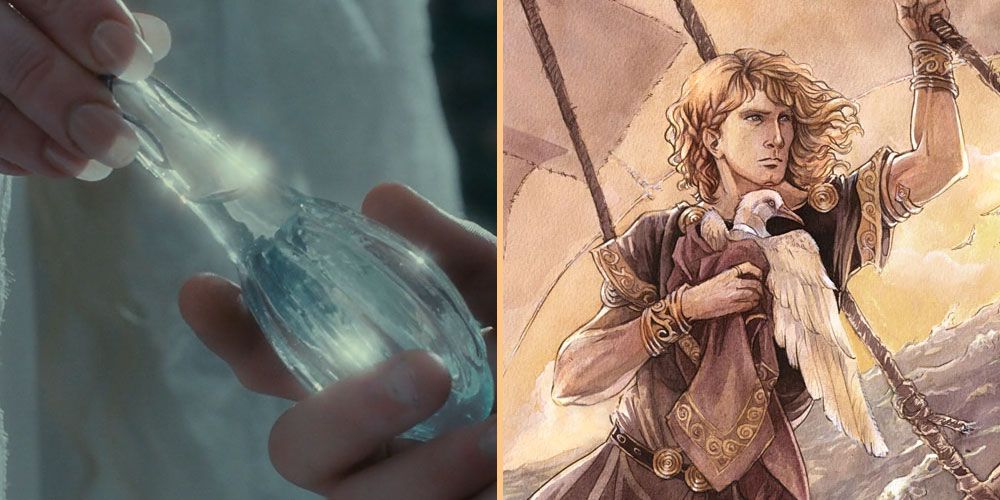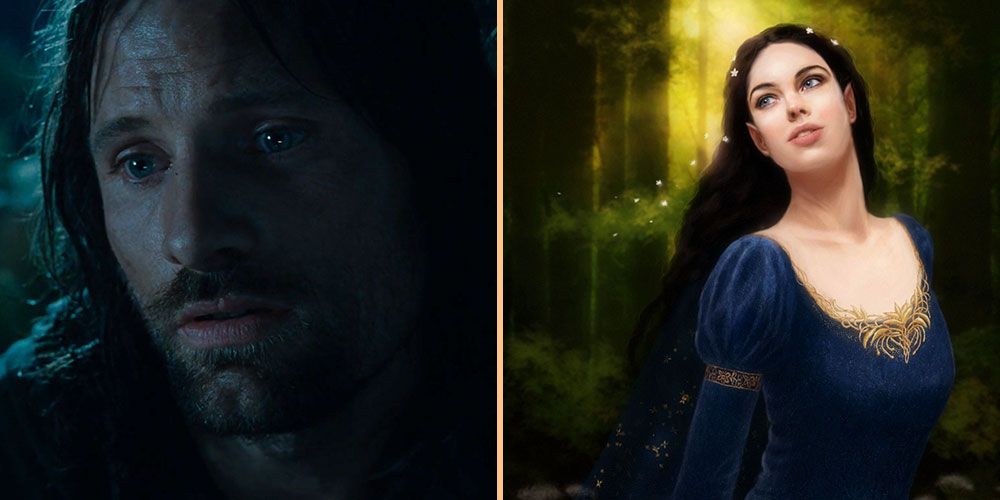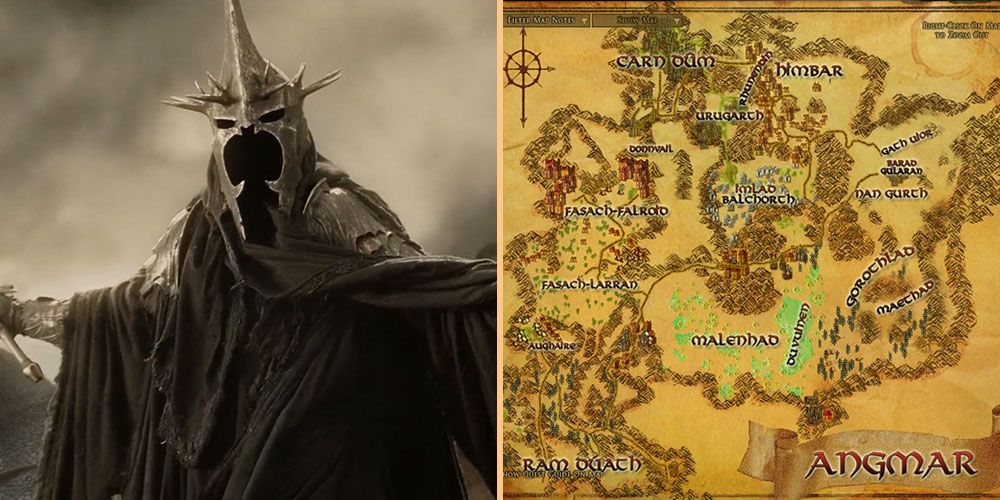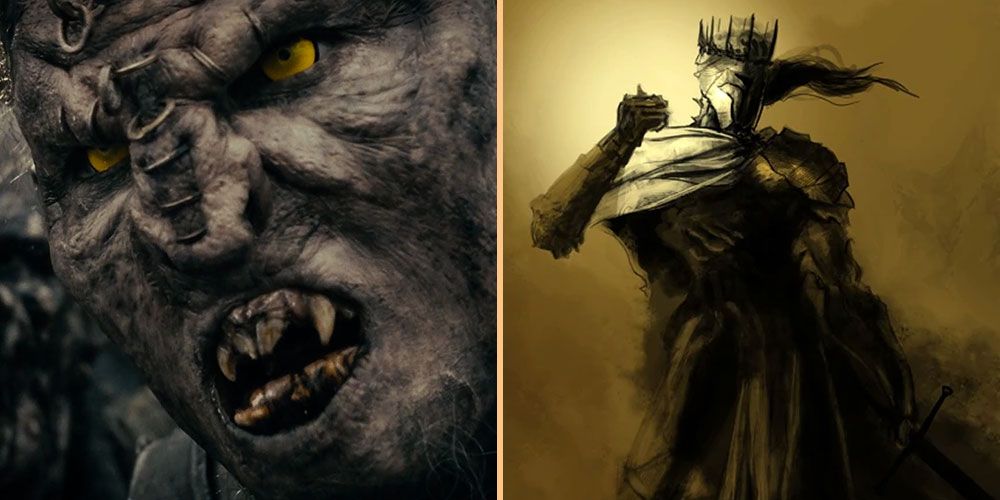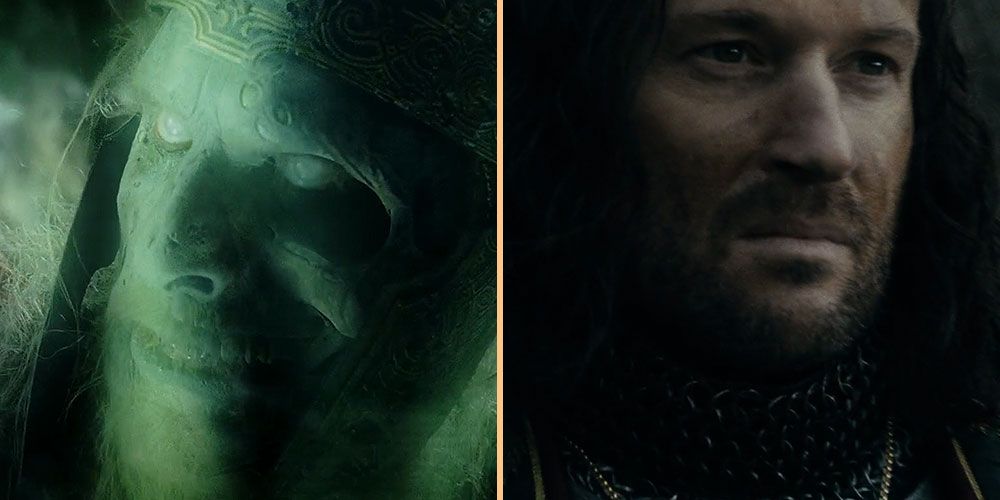The Lord Of The Rings film trilogy was Star Wars for an entirely new generation, and it remains one of the most iconic film franchises ever created. The brilliance of visionary director Peter Jackson and his impossibly talented team brought Middle Earth to cinemas in a way nobody could have expected.
Jackson, Fran Walsh and Philippa Boyens drew heavily from J.R.R. Tolkien's rich source material to fashion a living, breathing world, complete with its own history. This also created a lot of confusion for moviegoers who had never read the books, or delved too deeply into Tolkien's accompanying tales, such as The Silmarillion. Here's 10 references in the Lord Of The Rings movies that only fans of the books truly understood.
The Rings Of Power
The opening prologue of The Fellowship Of The Ring runs through the backstory of the events leading up to the loss of the One Ring. Here, audiences were told that Sauron had created a set of rings that he gifted to the races of Middle Earth, which could be controlled via the Ring of Power. Many fans were confused as to how his original plan did not work.
Chronologically, Sauron gave Rings of Power to the Elves before any other race. When he forged the One Ring and attempted to seize control over the Elves, they realized his intent and immediately took them off. Enraged by his failure, Sauron attacked the Elves and retrieved sixteen out of nineteen rings, which he gifted to the Dwarves and Men. While the Dwarves were unaffected by Sauron's control, they became obsessed with greed, which ultimately served his purpose, while the men were consumed by his power, transforming into the Nazghul. The Extended Edition of the film shows Galadriel revealing Nenya, her Ring of Power, to Frodo. This is one of three rings that Sauron did not have a hand in creating, thereby nullifying his influence over them.
Gandalf's Name
Gandalf the Grey is the title most film fans associate with the benevolent wizard, but many were confused when certain characters referred to him as Stormcrow or Mithrandir, instead. In truth, he has been known by many names, and Mithrandir was the one bestowed upon him by the Elves.
The men of Amor named him Gandalf, and for whatever reason, it stuck. Many Dwarves referred to him as Tharkûn, while southerners called him Incánus. His one true name, however? That would be Olórin.
The Balrog of Morgoth
Perhaps the coolest and most intense sequence in Fellowship Of The Ring was the battle against the terrifying Balrog, deep in the pits of Khazad-dûm. In the Extended Edition of the film, Legolas explains to the Woodland Elves that Gandalf fell while battling a "Balrog of Morgoth."
This is a direct reference to Morgoth (also known as Melkor), the first Dark Lord who predated Sauron in the First Age. He was responsible for a great many atrocities and evils during that time, including the creation of the Balrogs, who were ancient Maiar spirits (the same as Gandalf) corrupted by his dark power, and turned into demonic weapons.
Shelob
Arachnophobes were horrified by the reveal of Shelob in Return Of The King, and for good reason! She's an eight-legged nightmare who did more to demonize spiders than any other film since Arachnophobia.
What the film didn't touch upon was her origin story. Far from just a fat, grotesque spider, Shelob is actually a child of Ungoliant, a fearsome arachnid who allied herself with Melkor during the First Age, before the two became bitter enemies. Ungoliant is briefly mentioned by Radagast the Brown in The Hobbit: An Unexpected Journey.
Frodo's Vision
When Frodo and the Fellowship arrive at the home of Galadriel and her Elven kind, she asks him to look into a mirror so that he can be gifted with visions of events that may soon come to pass. The experience soon becomes horrifying for Frodo when he sees a future vision of The Shire overrun with Orcs, and turned into a barren wasteland.
This is a direct nod to the original Return Of The King novel, when Saruman overruns the The Shire and sets himself up as a small-time criminal in the chapter "The Scouring Of The Shire." The film version of Saruman suffers a much different fate.
The Light Of Eärendil
Before resuming their quest, Galadriel gifts the Fellowship with a number of items that will aid them during the journey. She gives Frodo the Light of Eärendil, which he later uses to ward off attacks by the giant spider Shelob.
In Tolkien's book The Silmarillion, Eärendil is described as a half-Elven male who played a vital role in defeating the forces of the first Dark Lord, Morgoth. Coincidentally, he is also the father of Elrond of Rivendell, who helped form the Fellowship of the Ring.
Aragorn's Song
The Extended Edition of Fellowship includes a scene featuring Aragorn singing softly, which stirs Frodo from his sleep and prompts him to ask "Who is she...this woman you speak of?" Aragorn replies "'Tis the lady of Lúthien, the Elf-maiden who gave her love to Beren, a mortal."
This is a reference to the story of Lúthien and Edain Beren, a mortal man. The two would claim the Silmaril from Morgoth before dying at a later date, which immortalized them in Elvish song and folklore. The story parallels the plight of the mortal Aragorn, and his love for Arwen, an Elf.
The Witch-King Of Angmar
Fans of the film loved the introduction of the Nazgûl in the Fellowship of the Ring, and their terrifying presence was sprinkled across both The Two Towers and Return Of The King, with one in particular taking center stage. The Witch-King of Angmar is the same Nazgûl who wounded Frodo during the skirmish on Weathertop, and a being who strikes fear into the heart of Gandalf, himself.
Angmar was an evil kingdom set up by the Witch-King in the year 1300 of the Third Age, over 1,700 years before Frodo destroyed the One Ring. The Witch-King used Angmar as a base of operations to launch attacks against the Dúnedain, which ultimately led to their downfall, as well as Rivendell. Eventually, Angmar would fall, and the Witch-King would flee to Mordor to prepare for events yet to come.
Origin Of The Orcs
When Saruman addresses his new Uruk-hai Commander Lurtz in The Fellowship of the Ring, he mentions how the Orcs were originally Elves who were twisted by darkness and turned into a "ruined and terrible form of life."
This is a reference to the First Age, when Morgoth created the first Orcs by subjecting them to cruel torture, and possibly the use of spells. Although the manner in which Orcs breed is left up to debate, it is possible that Morgoth defiled them at the genetic level, creating a base template from which to grow his forces.
The Dead Army's Curse
Return Of The King finds Aragorn wading into the catacombs underneath the Dwimorberg mountain to confront the Army of the Dead, who were cursed by Isildur for their betrayal during the conflict against Sauron's forces. What the film doesn't mention is that the Men of the White Mountains used to worship the Dark Lord Sauron, which trickled down into their culture, and prevented them from mustering the courage to fight against him.
The curse itself has been the subject of some controversy for years. While many fans believe that Isildur used the power of the One Ring to curse them, it's far more likely that the breaking of the oath itself was enough to seal their fate, all on its own. Tolkien's use of oaths in Middle Earth folklore is incredibly powerful, as evidenced by Elrond's cautioning regarding their use, which suggests there may be some sort of karma-related penalty for breaking them.

